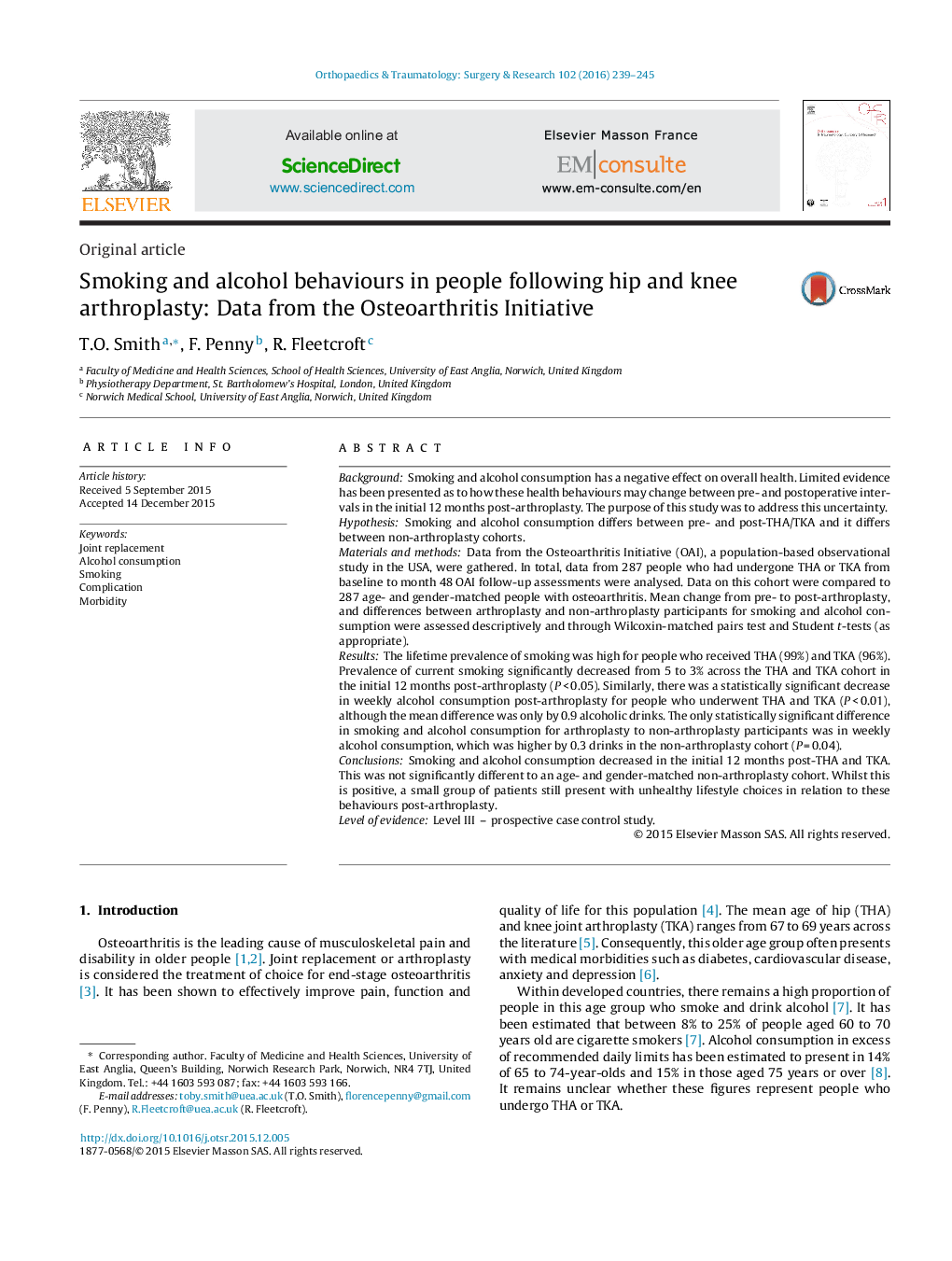| Article ID | Journal | Published Year | Pages | File Type |
|---|---|---|---|---|
| 4080832 | Orthopaedics & Traumatology: Surgery & Research | 2016 | 7 Pages |
BackgroundSmoking and alcohol consumption has a negative effect on overall health. Limited evidence has been presented as to how these health behaviours may change between pre- and postoperative intervals in the initial 12 months post-arthroplasty. The purpose of this study was to address this uncertainty.HypothesisSmoking and alcohol consumption differs between pre- and post-THA/TKA and it differs between non-arthroplasty cohorts.Materials and methodsData from the Osteoarthritis Initiative (OAI), a population-based observational study in the USA, were gathered. In total, data from 287 people who had undergone THA or TKA from baseline to month 48 OAI follow-up assessments were analysed. Data on this cohort were compared to 287 age- and gender-matched people with osteoarthritis. Mean change from pre- to post-arthroplasty, and differences between arthroplasty and non-arthroplasty participants for smoking and alcohol consumption were assessed descriptively and through Wilcoxin-matched pairs test and Student t-tests (as appropriate).ResultsThe lifetime prevalence of smoking was high for people who received THA (99%) and TKA (96%). Prevalence of current smoking significantly decreased from 5 to 3% across the THA and TKA cohort in the initial 12 months post-arthroplasty (P < 0.05). Similarly, there was a statistically significant decrease in weekly alcohol consumption post-arthroplasty for people who underwent THA and TKA (P < 0.01), although the mean difference was only by 0.9 alcoholic drinks. The only statistically significant difference in smoking and alcohol consumption for arthroplasty to non-arthroplasty participants was in weekly alcohol consumption, which was higher by 0.3 drinks in the non-arthroplasty cohort (P = 0.04).ConclusionsSmoking and alcohol consumption decreased in the initial 12 months post-THA and TKA. This was not significantly different to an age- and gender-matched non-arthroplasty cohort. Whilst this is positive, a small group of patients still present with unhealthy lifestyle choices in relation to these behaviours post-arthroplasty.Level of evidenceLevel III – prospective case control study.
